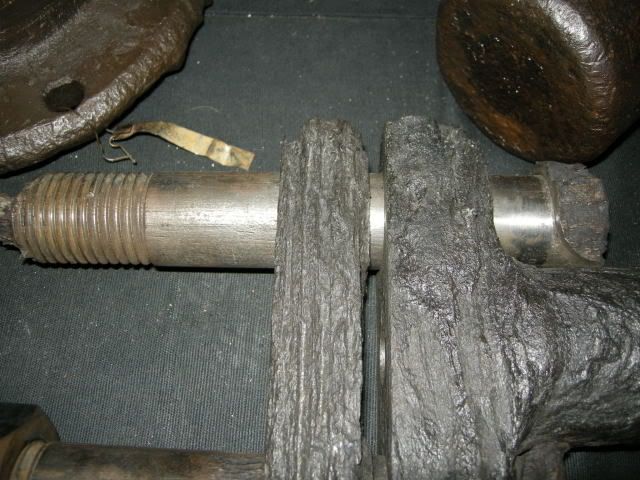928gene928
Cast Iron
- Joined
- Sep 13, 2005
- Location
- Joliet, Illinois
Which is the best anti-seize compound to use with steel fasteners into aluminum, copper or nickle??
Follow along with the video below to see how to install our site as a web app on your home screen.
Note: This feature may not be available in some browsers.

Steel fasteners in to alumininium? copper A S works for me, in fact copper works for most combos - anythings better than nothing
I only use nickel base AS in very high temp applications ( turbo charger bolts?) or where specified.
"On nuclear work we used graphite-in-distilled water (F.A.: ethanol would have been nicer, but I found out several years ago that ethanol can corrode and eat through 304L tubing)."
Zounds!! No kinnding!! What was the corrosion mechanism? I've heard of chloride corrosion, electrolysis, intergranulars etc but alcohol? CH2COOH etc? Where is the nasty ion?
...(F.A.: ethanol would have been nicer, but I found out several years ago that ethanol can corrode and eat through 304L tubing).
Arminius
when dealing with aluminium or stainless don't use copper anti seize.
when dealing with aluminium or stainless don't use copper anti seize.

I’m wary about chipping in here, as I’m only going to give half a story about a very complicated topic which has lots of ifs and buts.
Be very, very careful about using any ‘anti-seize’ compound on critical applications. I’m not going to attempt to define ‘critical’ or to recommend any products, but be aware that in hot, wet conditions, many of the organic ingredients of these compounds can break down to produce organic acids. These can initiate stress corrosion cracking (intergranular) of steel fasteners. It is true that hot, wet conditions alone can result in SCC, but it is much more likely when lubricants are present, and worst of the lot are compounds containing moly disulphide or copper. This is a big problem on things like valves on high pressure/high temperature steam or water systems, where many potentially dangerous failures have occurred. Fasteners have become wet through steam leakage, cracks have initiated and propagated, and the fasteners have failed. Many companies in the power generation industry have strict controls on the use of lubricants for this reason.
Graphite in water, as mentioned by Armenius, is widely accepted, although as can be imagined its effectiveness as a thread lubricant is not as good as the more obviously slippery compounds. There is also a very limited range of proprietary lubricants that are accepted, but I can’t quote names and numbers.
At the power plant I work at we are in search of a better anti seize product for steam applications. Do you have any suggestions on what works well inside steam turbines, valves etc?
Notice
This website or its third-party tools process personal data (e.g. browsing data or IP addresses) and use cookies or other identifiers, which are necessary for its functioning and required to achieve the purposes illustrated in the cookie policy. To learn more, please refer to the cookie policy. In case of sale of your personal information, you may opt out by sending us an email via our Contact Us page. To find out more about the categories of personal information collected and the purposes for which such information will be used, please refer to our privacy policy. You accept the use of cookies or other identifiers by closing or dismissing this notice, by scrolling this page, by clicking a link or button or by continuing to browse otherwise.
